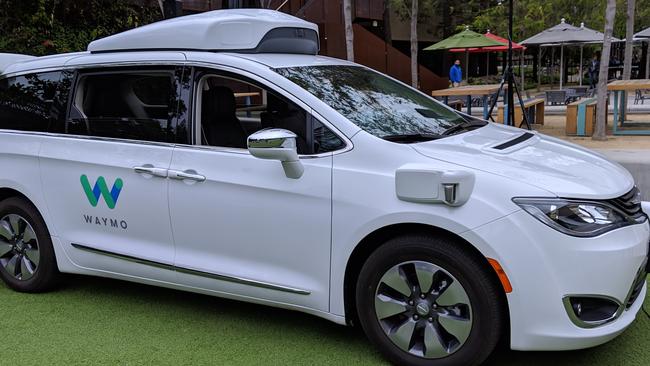Waymo says it’s building a driver, not a car
An offshoot of Google parent Alphabet, Waymo says it’s building a driver, not a car.

Be ready for your first encounter with a driverless car, empty of humans, on the road. It’s not happening yet, but it’s on the road map for Alphabet subsidiary Waymo, which is trialling new driverless scenarios as well as piloting commercial operations in the US.
In future, you might summon a driverless car to pick up your children at school and take them home, or pick-up your grandmother and take her to the doctor. The car may turn up with no one aboard.
For now, Waymo’s pilot commercial services are about ride sharing, and contain a human driver who doesn’t drive but can intervene in emergencies. Waymo separately trials cars without drivers.
Waymo has been trialling driverless cars for four years. It says the first demonstration took place in Austin, Texas in 2015 with just one passenger. There was no one else in the vehicle, no police escort or no special set up.
In 2017, Waymo entered the next phase with testing on public roads and it has been testing in driverless mode since. “We’re not building a car, we’re building a driver,” a spokesman said.
Waymo now is testing driverless systems for cars, trucking, and public vehicles. Trails have now taken place in around 25 US cities.
In December Waymo launched Waymo One, its first commercial driverless rollout. It’s running in Phoenix, Arizona with more than 100 self-driving vehicles in a partnership with ride sharing service Left.
Waymo is using this project to learn how to operate a driverless fleet. In Michigan, its cars are learning to deal with snow. There have also been trials in Seattle.
The driverless cars are being tested to deal with conditions such as dust, rain, snow, and sleet, when it can’t see lane markings, and construction zones and road works.
Waymo develops both the hardware and software components of its driverless technology in-house. It says it can get its technology working faster with tight integration.
Waymo cars use radar, Lidar and cameras to understand the surroundings. Lidar interprets the world in 3D and Waymo’s version of it takes two forms: medium range Lidar scans a view of 95 degrees while long range Lidar sees three football fields away.
Waymo cars have 6 Lidar sensors to gain a 360 degree view in rain, fog and snow, and 19 high resolution cameras. Cars have a customised computer to handle the processing needs of real time driving. A second computer is used for backup.
AI and deep learning are used to explore the environment. Computer vision understands the environment, what a pedestrian is, what is a mailbox and cyclist. But it’s not enough to see the current situation. These cars need to also predict what these pedestrians and cyclists are about to do.
While machine learning is amazingly useful, you don’t need machine learning to know you must stop at a red light. So the Waymo system interprets road rules as well, in what is a hybrid navigation system. Waymo cars have driven more than 10 million miles so far. The company now is looking to test its systems in more cities.
Waymo cars work better as the recorded data about an area increases. The flip side is that a new area creates new challenges should little data exists. Drivers in one part of the world might behave differently on the road to drivers in another.
Chris Griffith is attending Google I/O in Mountain View, California courtesy of Google.



To join the conversation, please log in. Don't have an account? Register
Join the conversation, you are commenting as Logout